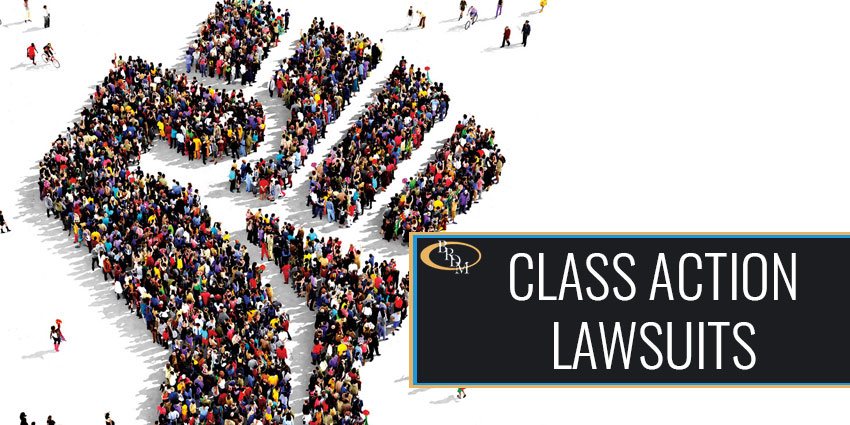Understanding Class Action Claim: An Overview for Attorney
Class action suits have ended up being an important component of the legal landscape, enabling for the debt consolidation of numerous insurance claims into a single action. For lawyers, understanding the intricacies of course activity litigation is important in efficiently representing their clients. This comprehensive guide discovers the basics of course activity lawsuits, from recognizing possible course members to navigating the accreditation process. Additionally, it dives right into vital approaches for taking care of class action lawsuits and offers insights right into obtaining and bargaining authorization for settlements. By diving into the details of course action claims, this guide outfits attorneys with the knowledge and devices needed to efficiently navigate this intricate area of law.
The Fundamentals of Course Activity Suits
Course activity lawsuits are a legal device employed to combine comparable cases from a group of people into a single claim, giving a economical and reliable approach to seeking justice and resolution. This kind of legal action allows a representative complainant, acting upon part of the whole class, to bring a claim against an accused that has actually apparently created injury or violated the legal rights of multiple individuals.
The fundamental demands for bringing a course activity claim consist of numerosity, commonness, typicality, and competence of depiction. Numerosity describes the reality that the course have to be so huge that joinder of all participants would certainly be impractical. Commonality means that there must be common questions of law or fact that are shared by all participants of the course. Typicality calls for that the cases of the depictive complainant are normal of the insurance claims of the entire class. Adequacy of representation ensures that the depictive complainant will effectively represent the interests of the whole class.
Class activity lawsuits can be beneficial for both defendants and complainants. For plaintiffs, it permits them to merge their resources and share the dangers and costs connected with litigation. It also gives an equal opportunity when they are up against big corporations or entities. For accuseds, it offers the chance to efficiently resolve numerous claims in a solitary suit, staying clear of the need to resist many individual claims.
Identifying and Assessing Prospective Course Participants
After developing the basic demands for a course activity lawsuit, the next step is to identify and examine potential class participants. This process entails establishing that may become part of the class and evaluating their claims to figure out if they satisfy the essential standards.
To determine potential class members, legal representatives usually perform extensive study and gather appropriate information. This might entail reviewing files, performing interviews, and checking out documents to determine individuals or entities that may have been affected by the alleged misdeed. It is critical to establish a clear and comprehensive checklist of possible course members to make certain that all influenced events are consisted of in the lawsuit.
When potential course participants have been identified, the following step is to analyze their cases. If they meet the lawful needs for course accreditation, this involves reviewing the values of each private case to determine. Lawyers need to carefully examine the realities, evidence, and lawful concepts of each potential class participant's insurance claim to make sure that they have a practical situation.
Examining prospective class participants additionally involves determining whether they satisfy the course interpretation and have endured comparable harm as a result of the accused's actions. This calls for contrasting the facts and situations of each potential class member's scenario to the claims and lawful concepts presented in the suit.
Navigating the Class Accreditation Refine
To successfully browse the course qualification process, legal representatives have to carefully stick to the step-by-step needs established forth by the court. Class certification is an essential action in a class activity legal action, as it establishes whether a case can proceed as a course action, standing for a group of people who have comparable cases against an offender. The process entails satisfying specific requirements, such as numerosity, commonality, typicality, and competence of representation.
Firstly, attorneys have to establish numerosity by showing that the class is so huge that individual joinder is impractical. This needs an extensive evaluation of the insurance claims and defenses included.
Next, lawyers have to show typicality, which means that the representative plaintiff's insurance claims are regular of the cases of the course members. This guarantees that the passions of the depictive plaintiff straighten with the rate of interests of the class. Legal representatives should show competence of depiction, suggesting that the representative complainant and their counsel will relatively and sufficiently stand for the rate of interests of the course.
To browse this process successfully, attorneys should completely prepare by carrying out substantial research study, collecting evidence, and establishing an engaging argument that satisfies each of these criteria. They need to also be prepared to reply to any kind of objections or obstacles raised by the defendant. By faithfully adhering to the step-by-step needs stated by the court, legal representatives can boost their opportunities of getting course accreditation and advancing the rate of interests of the course members.

Trick Techniques for Managing Course Action Litigation
Upon successfully browsing the course certification process, attorneys should then apply essential methods for successfully handling class action litigation. These strategies are essential to guarantee that the case continues smoothly and successfully, ultimately making best use of the chances of a desirable result for the class participants.
One key strategy is to develop a cohesive and strong lawful group (Class action lawsuit). This involves putting together a group of lawyers with know-how in course action lawsuits, in addition to various other appropriate locations such as the particular industry or topic entailed in the situation. A versatile group can bring different point of views and skills to the table, enhancing the total effectiveness of the litigation
An additional essential technique is to develop a thorough and well-thought-out litigation plan. This plan ought to lay out the total goals of the case, as well as the specific legal concepts and disagreements that will certainly be pursued. It ought to additionally include a timeline and spending plan to make sure that the case remains on track and within the assigned sources.
Furthermore, lawyers should proactively see this website engage with the class participants throughout the litigation process (Class action lawsuit). This consists of offering regular updates on the progression of the situation, seeking input and responses from the class members, and resolving directory any type of concerns or concerns they might have. By fostering open interaction and cooperation, attorneys can build depend on and support amongst the class participants, which can be instrumental in attaining a successful resolution
Resolving Class Activity Suits: Arrangement and Approval
When it involves working out course action claims, effective settlement and getting approval are essential steps in attaining a resolution. Course activity claims are complex and include a big number of complainants, making it vital to get to a settlement that is sufficient and fair to all celebrations entailed.

As soon as a settlement agreement is reached, it should be accepted by the court. The court's duty in this procedure is to ensure that the settlement is fair, sensible, and effectively shields the passions of the other course members. The court will certainly consider aspects such as the nature of the cases, the toughness of the proof, the potential recovery for the course participants, and any kind of arguments elevated by course participants.
Acquiring court approval is important as it supplies finality to the settlement and safeguards the interests of the class participants. It makes certain that the negotiation is binding and enforceable, and course members can receive their rightful compensation.
Conclusion

Course action legal actions have actually become an integral component of the legal landscape, permitting for the debt consolidation of several cases into a solitary action. Course accreditation is a crucial action in a class activity lawsuit, as it figures out whether a case can continue as a class action, standing for a group of individuals that have similar insurance claims against an accused. By diligently adhering to the step-by-step requirements set forth by the court, legal representatives can enhance their opportunities of obtaining course qualification and advancing the passions of the course members.
The court will certainly take into consideration elements such as the nature of the cases, the strength of the evidence, the prospective recuperation for the class members, and any type of arguments raised by class participants.
By recognizing and evaluating prospective course members, lawyers can figure out the stability of a class action suit.